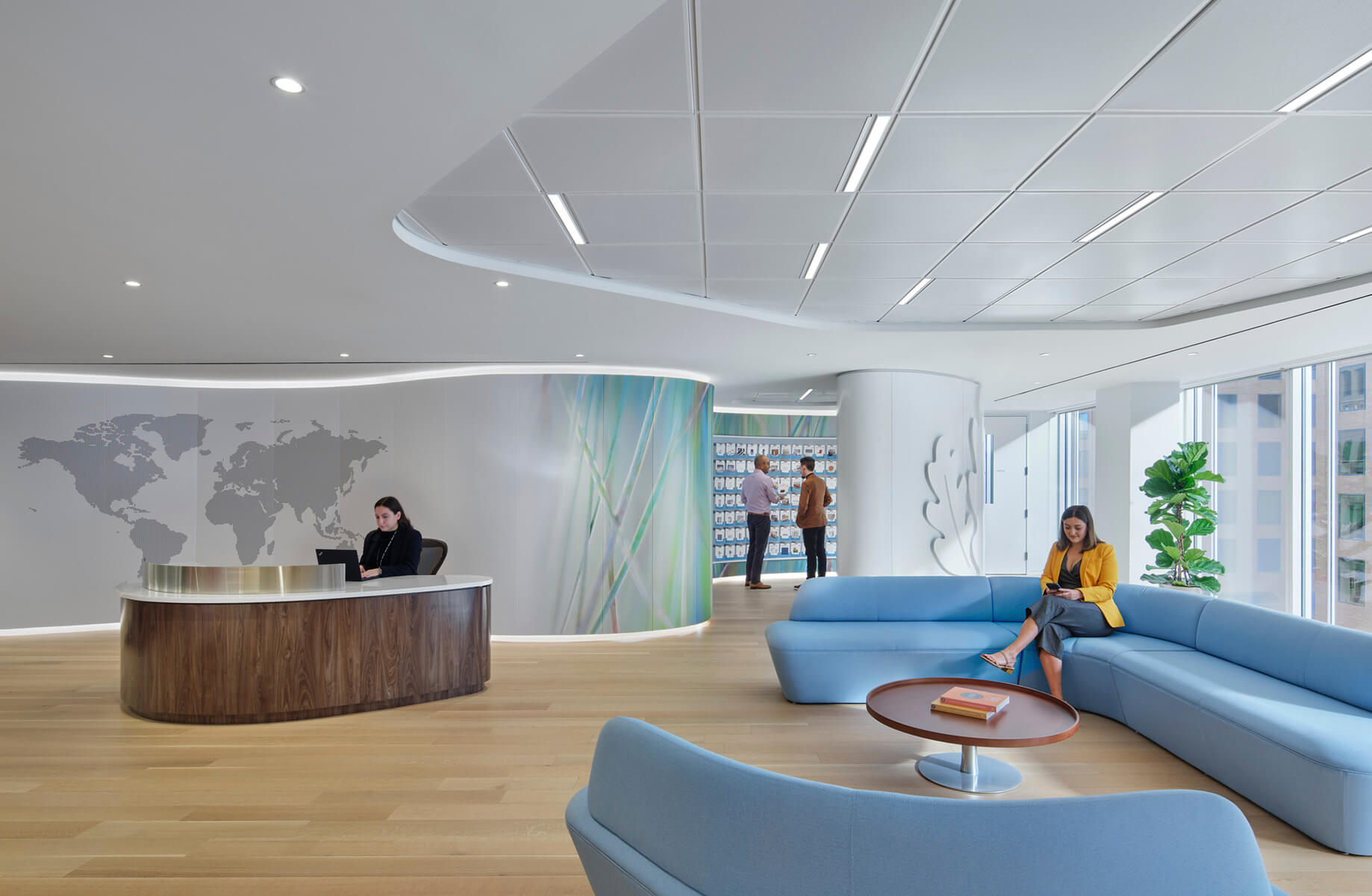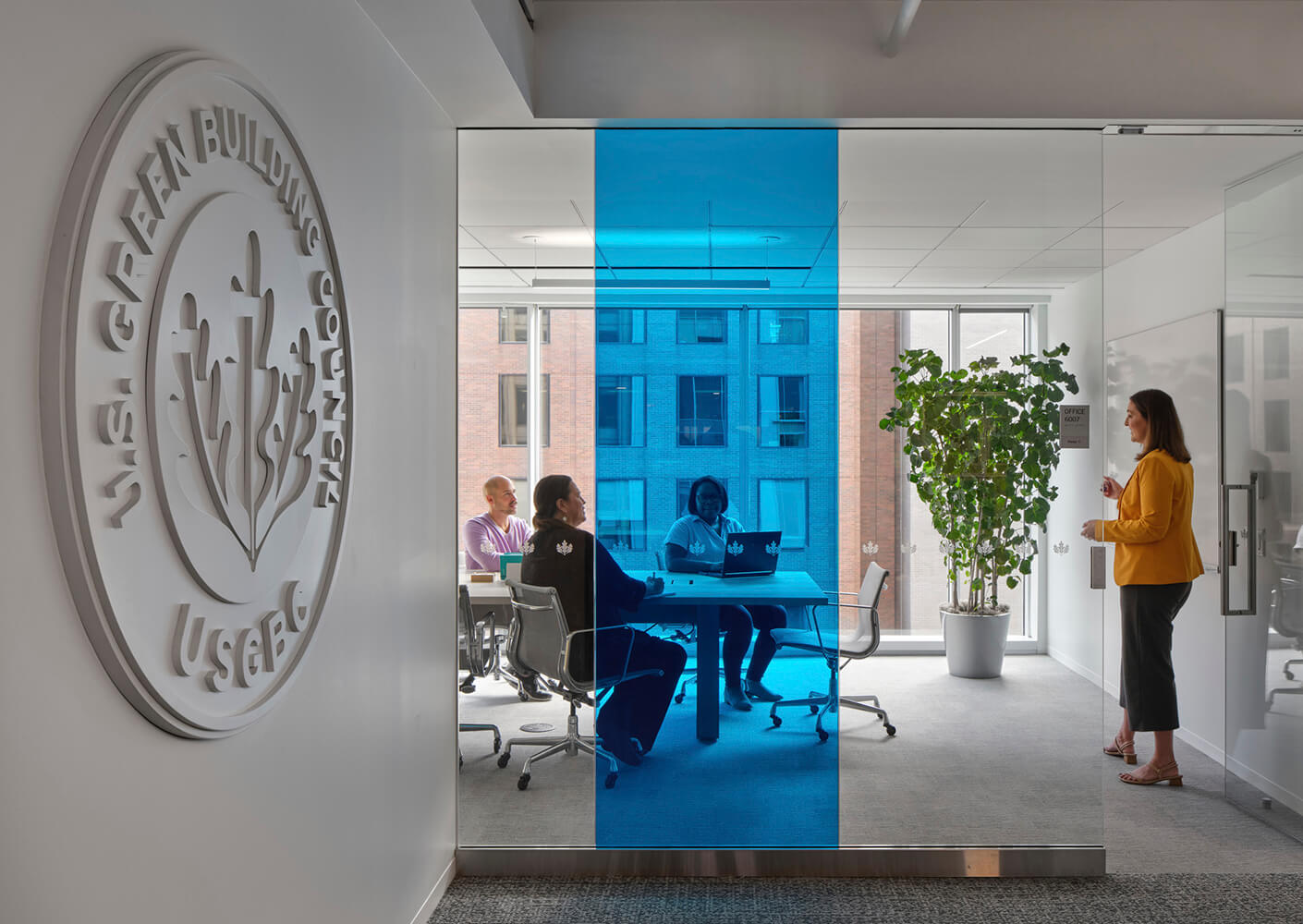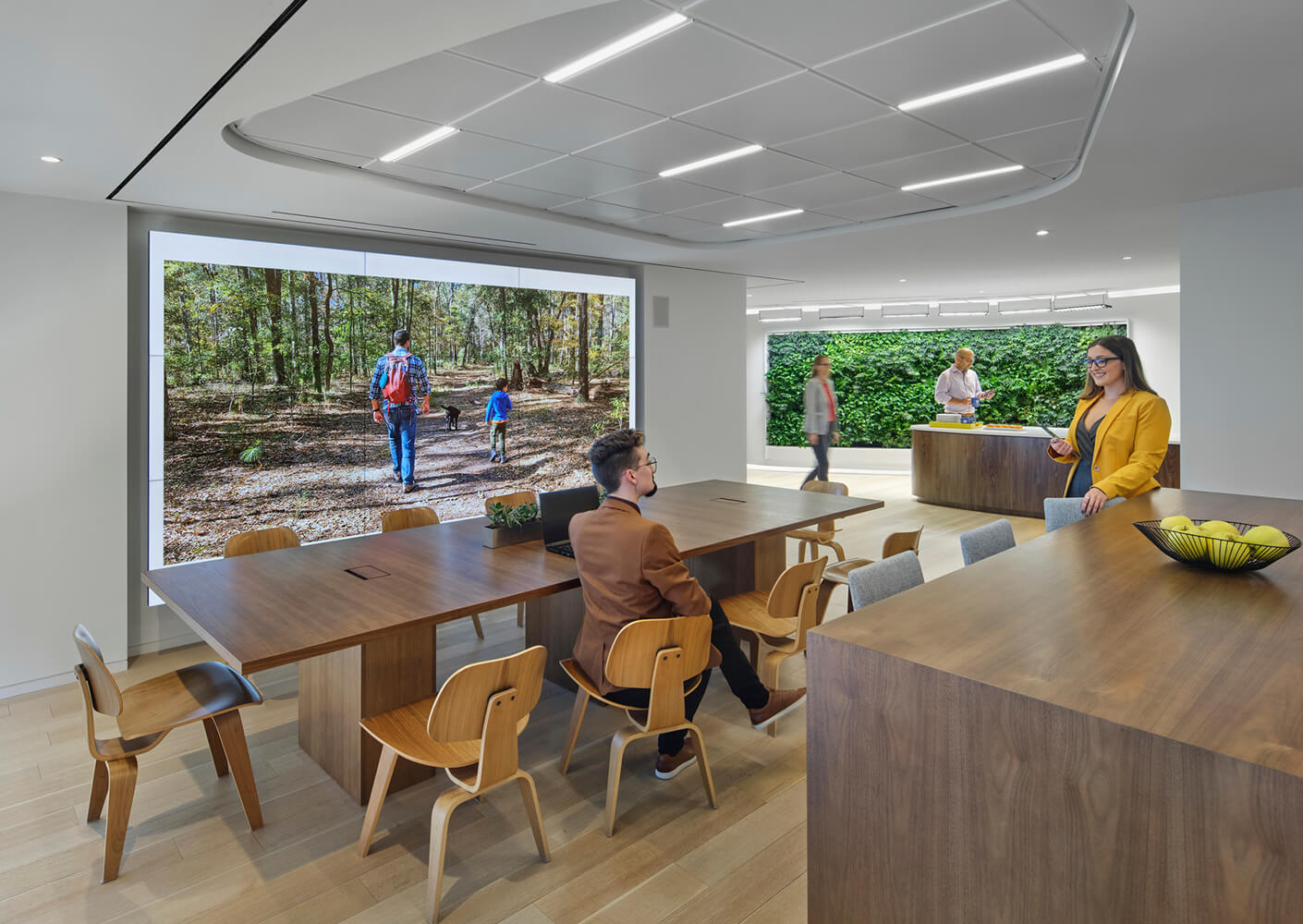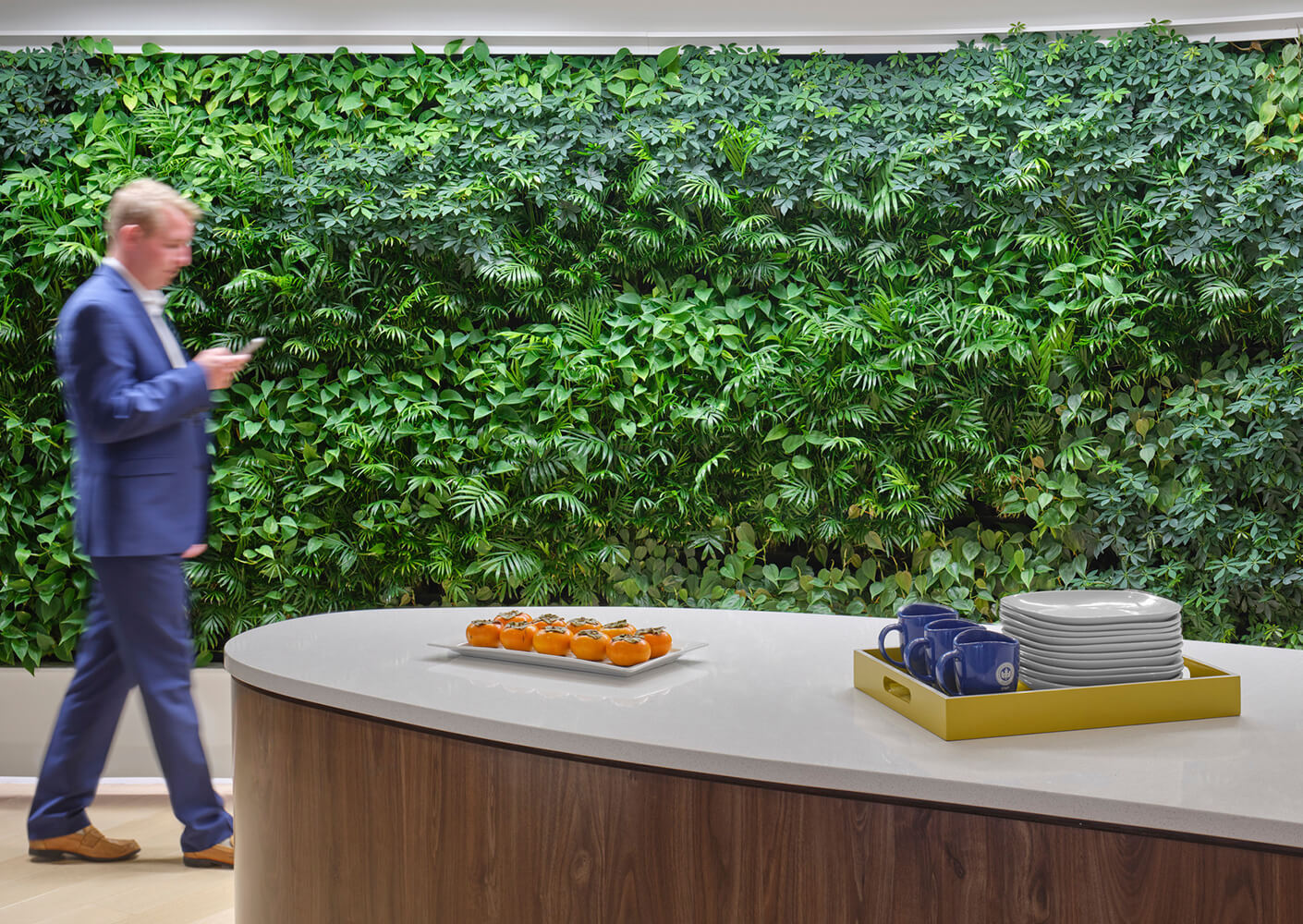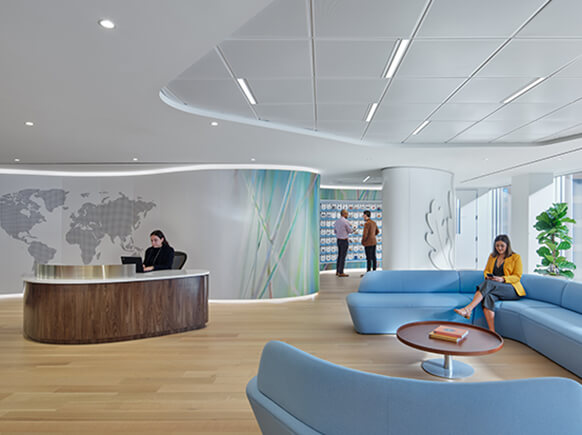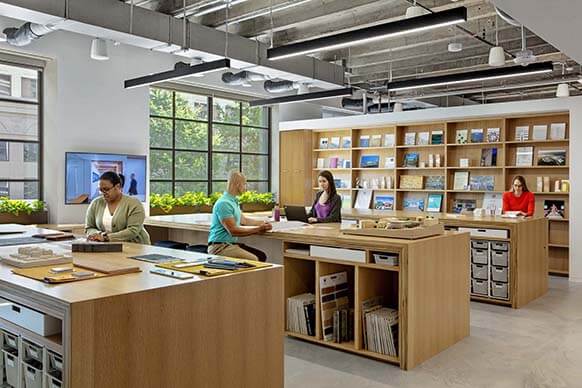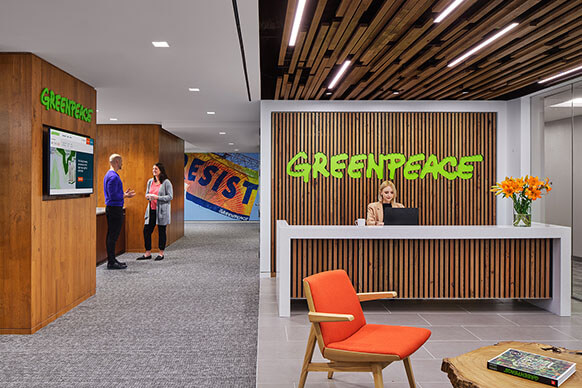The headquarters of the U.S. Green Building Council (USGBC) in Washington, D.C., designed by Perkins&Will, is the first project in the world to receive three Platinum certifications from the Green Building Certification Inc. (GBCI): LEED ID+C, WELL, and TRUE. The project is a renovation of the organization’s former space at 2101 L Street NW, a LEED Gold certified commercial building designed in the 1970s, owned by JBG Smith. Operating as both a workplace and a hub for collaboration with partners and members, the design achieved a 44% reduction of embodied carbon from baseline and saw a waste diversion rate of 94.3%. The completed space will ensure a healthy workplace through materials and design features that support mental and physical wellbeing.
“Our new headquarters is a showcase for our mission and a working demonstration of green building leadership,” says Peter Templeton, USGBC president and CEO. “USGBC wants to lead by example by creating a workspace that prioritizes health, wellness and sustainability for our staff, partners and visitors.”
Earning Platinum certifications means the project has achieved the highest levels of compliance in various environmental categories. LEED ID+C tracks carbon emissions to conserve resources, reduce operating costs, prioritize sustainable practices, and create a healthier environment in interior spaces; WELL sets performance requirements for quality in air, water, nourishment, light, fitness, comfort, and mind; and TRUE measures zero waste performance by encouraging the adoption of sustainable resource management and waste reduction practices.
Carbon Forecasting and Circularity
Perkins&Will and the USGBC were able to achieve precedent-setting reductions in embodied carbon and life cycle emissions by employing sustainability and wellness strategies throughout the design process. Perkins&Will’s early partnership with the Building Transparency Embodied Carbon in Construction Calculator (EC3) Tool allowed the firm to research and specify materials with a low embodied carbon impact.
The project team also completed a tallyCAT Life Cycle Assessment (LCA), which provided further insights into opportunities to reduce emissions in embodied, operational, and end-of-use scenarios. A free and open-access tool, tallyCAT helps design professionals make environmentally responsible decisions early, swiftly, and confidently all while working within Revit, a building information modeling (BIM) software. Perkins&Will collaborated with Building Transparency and C-Change labs to develop the software, which launched in 2022.
